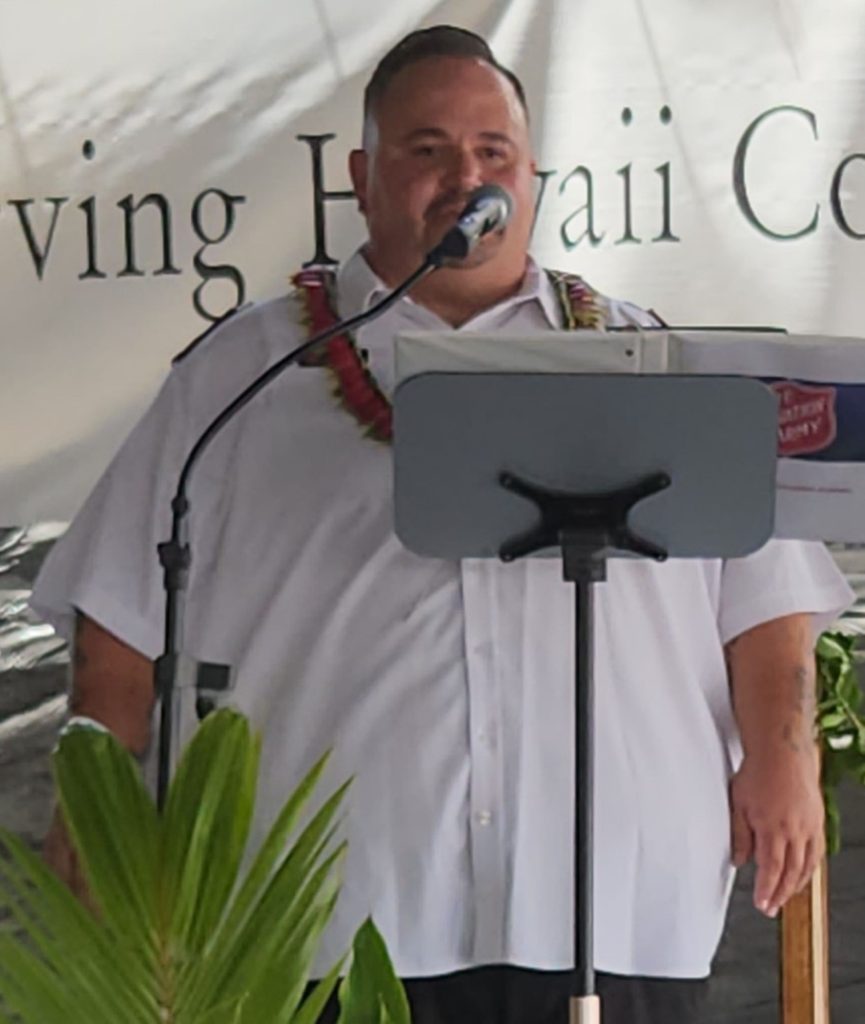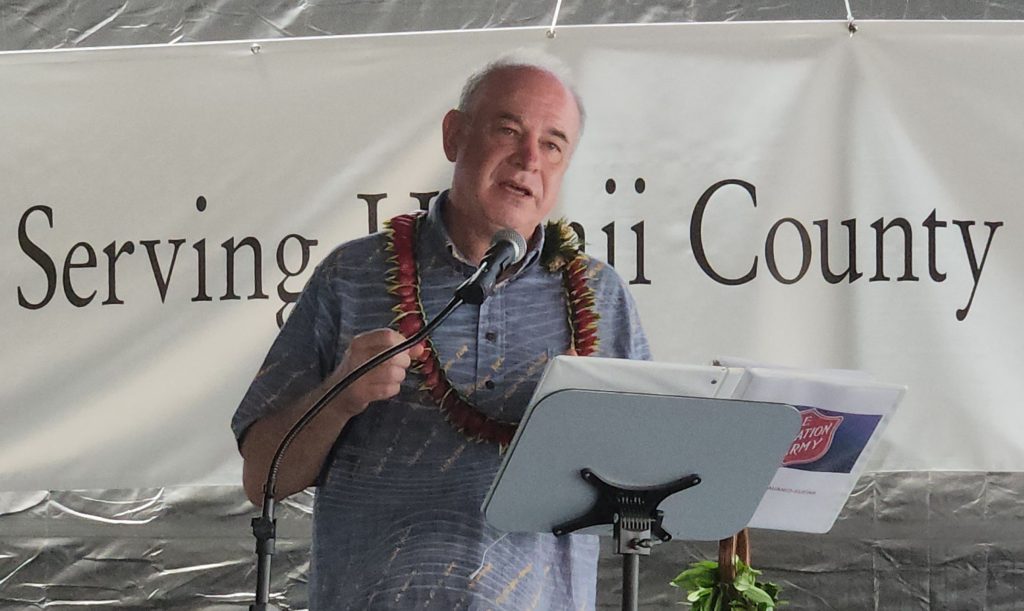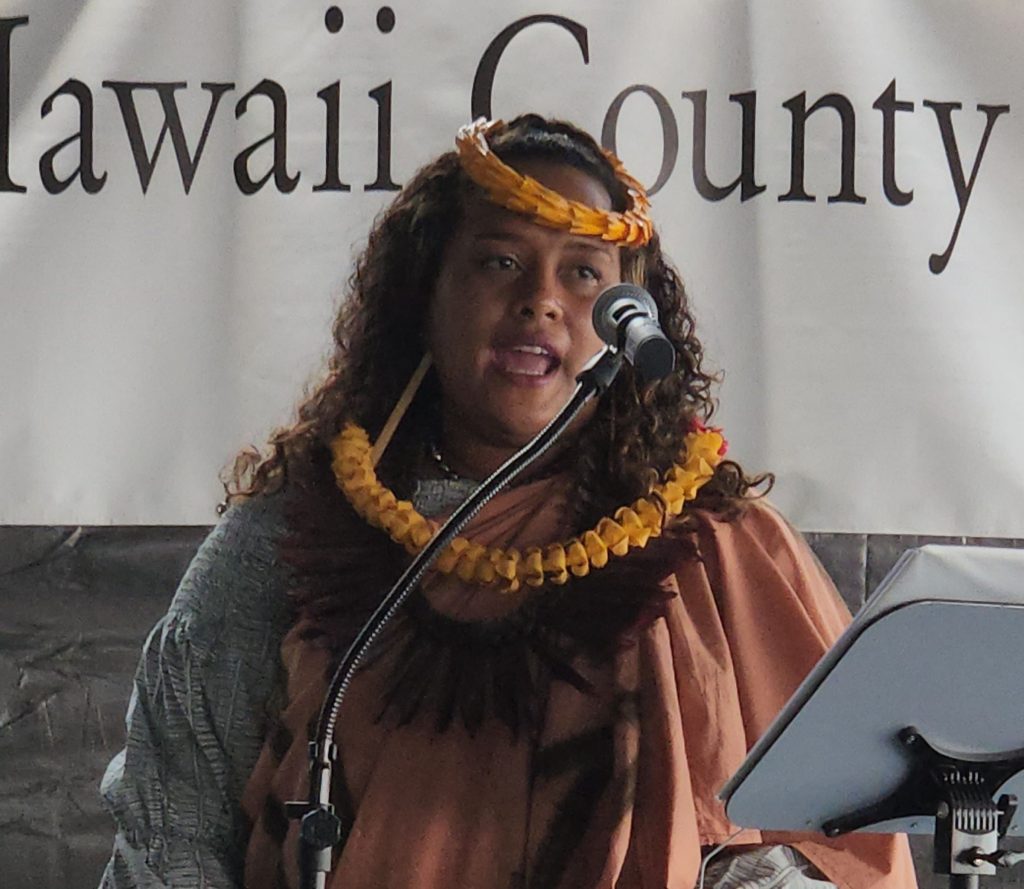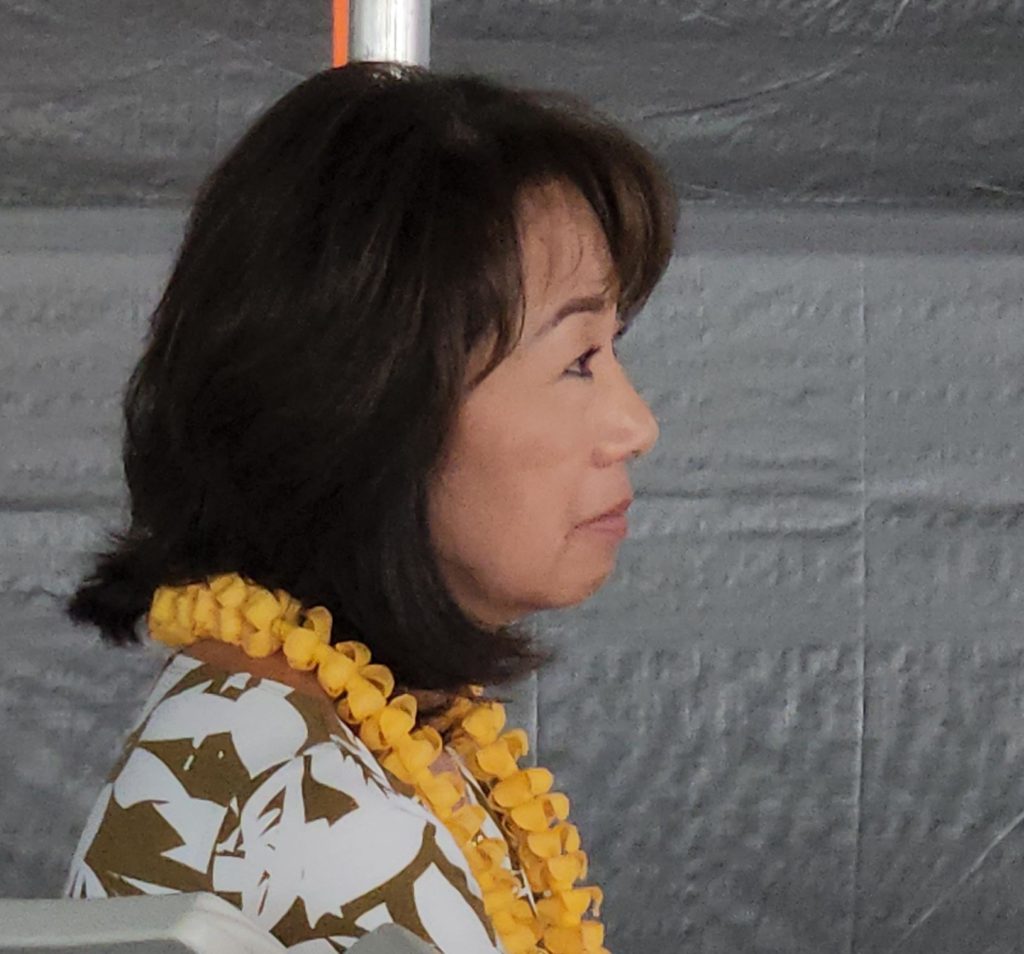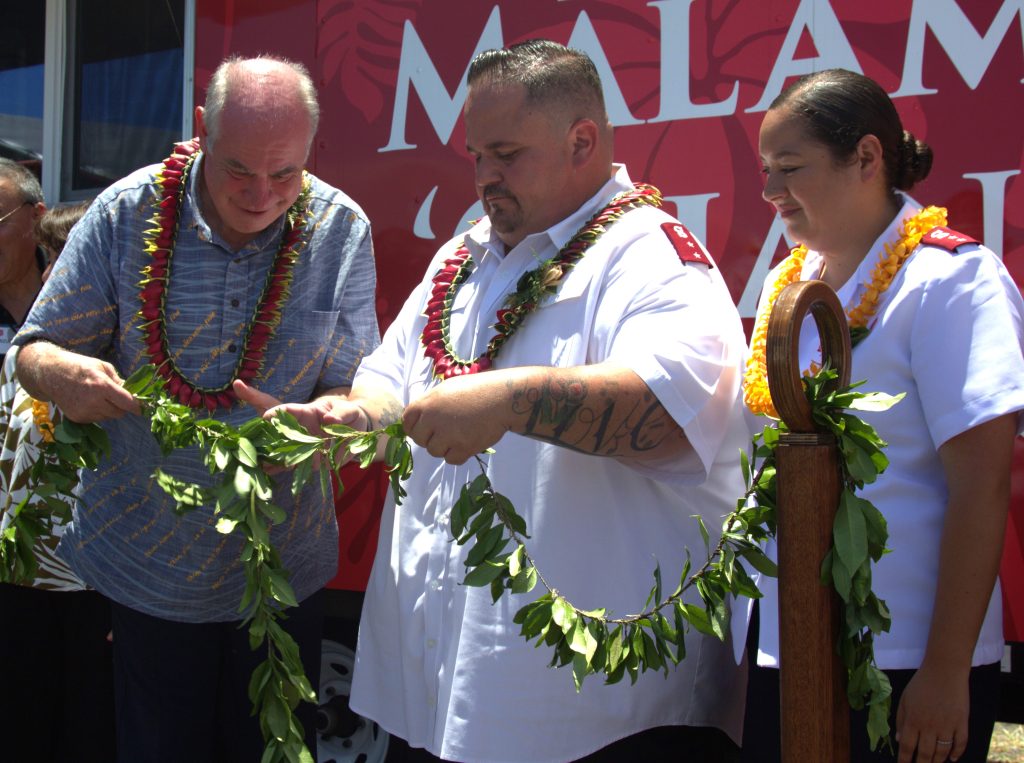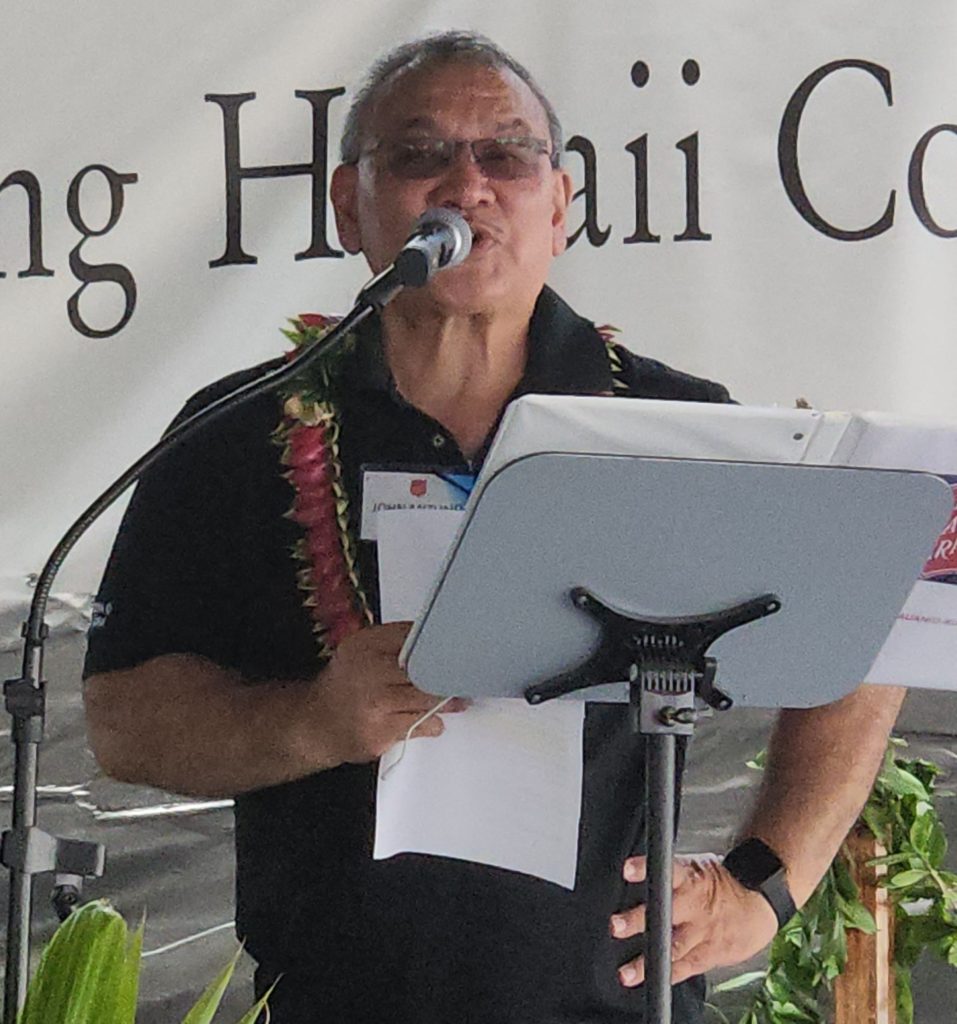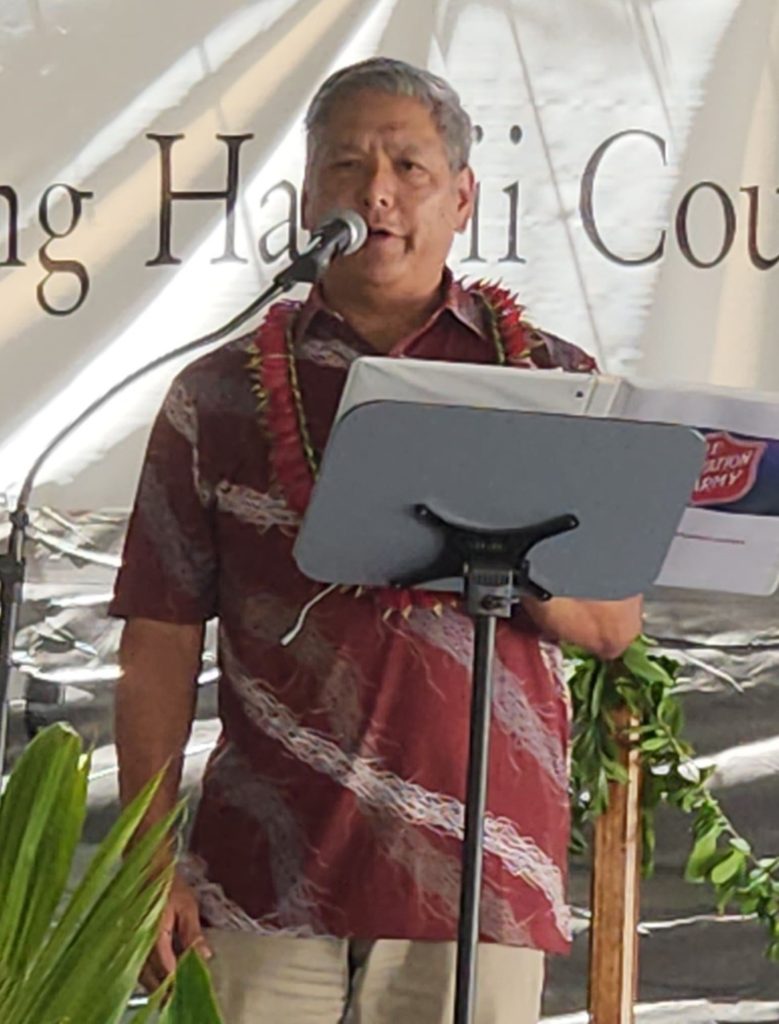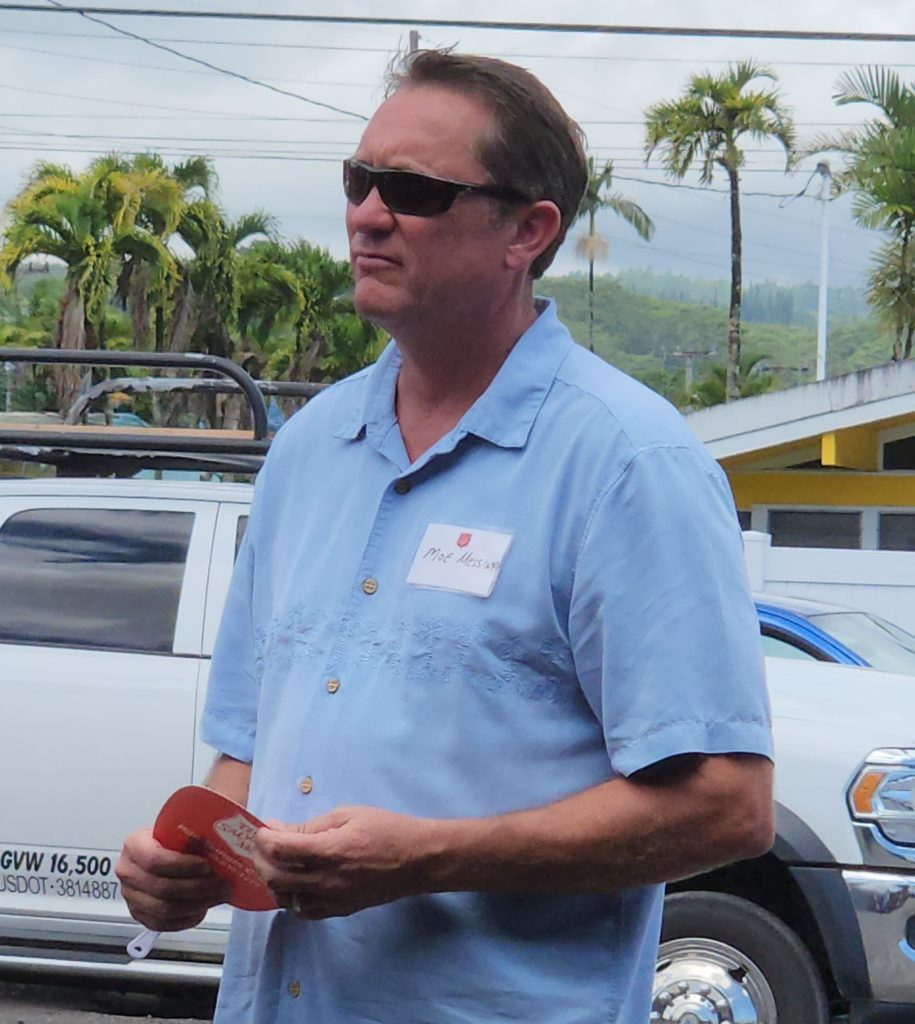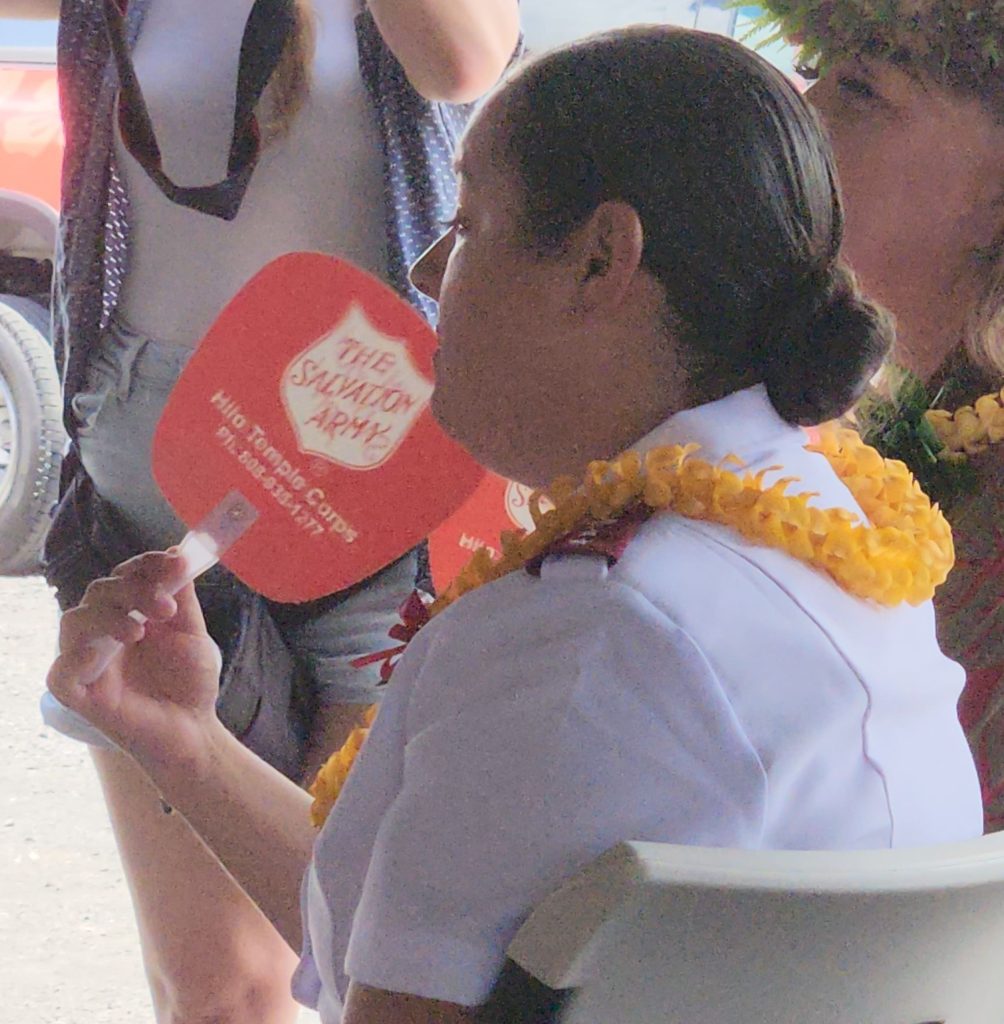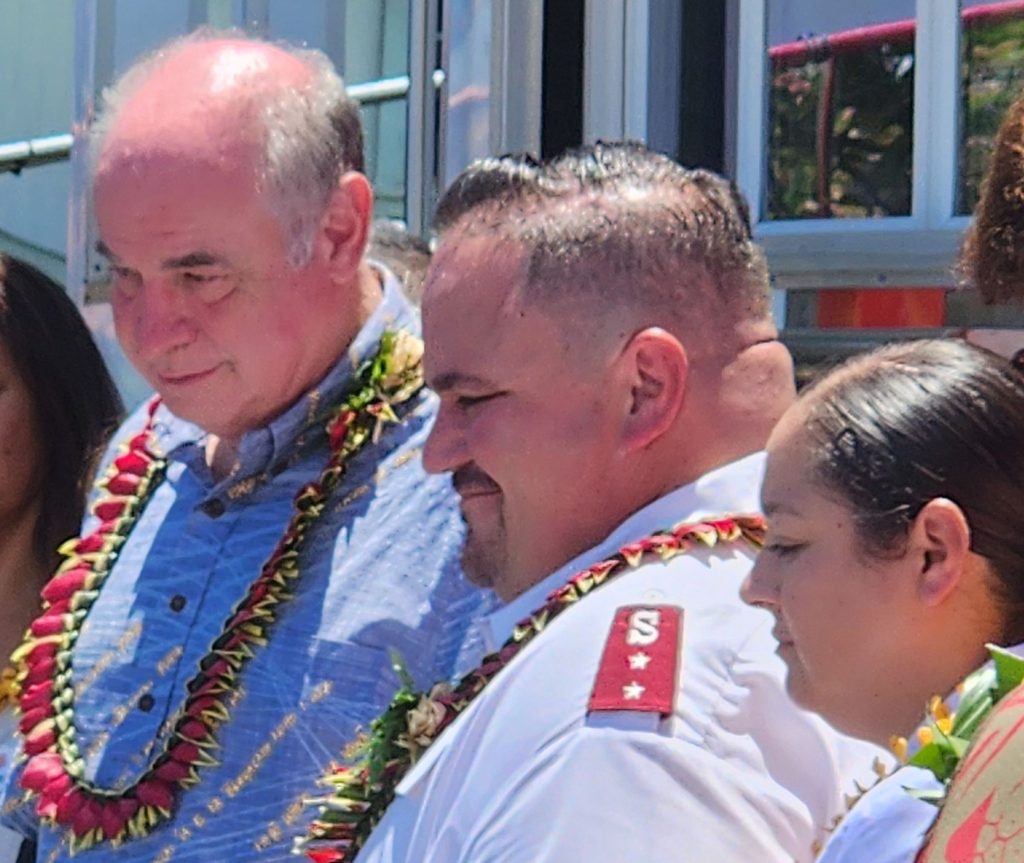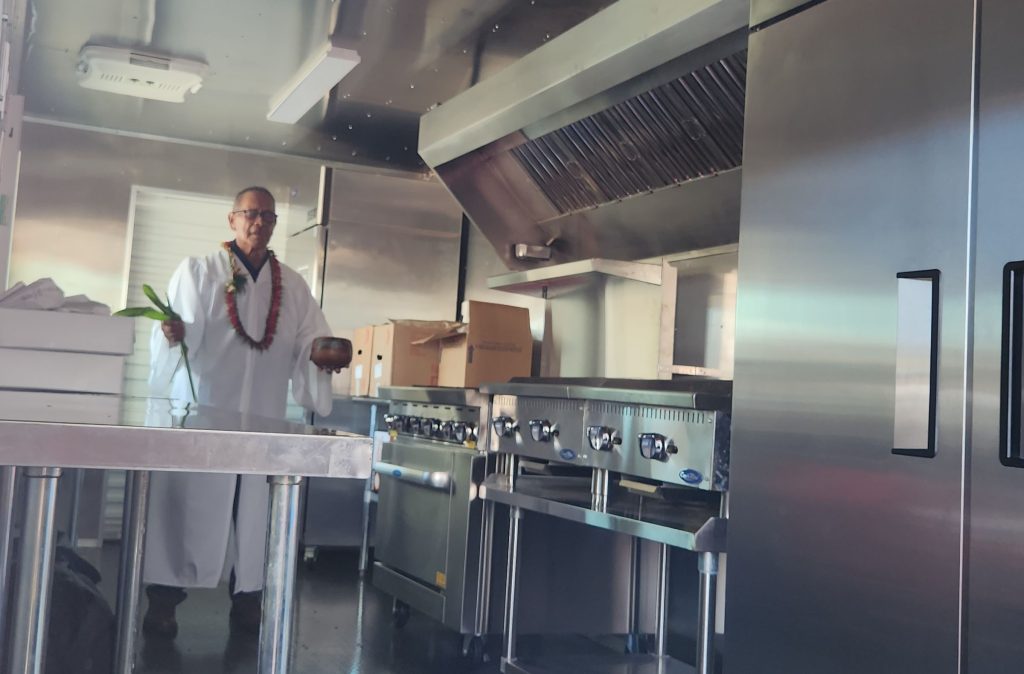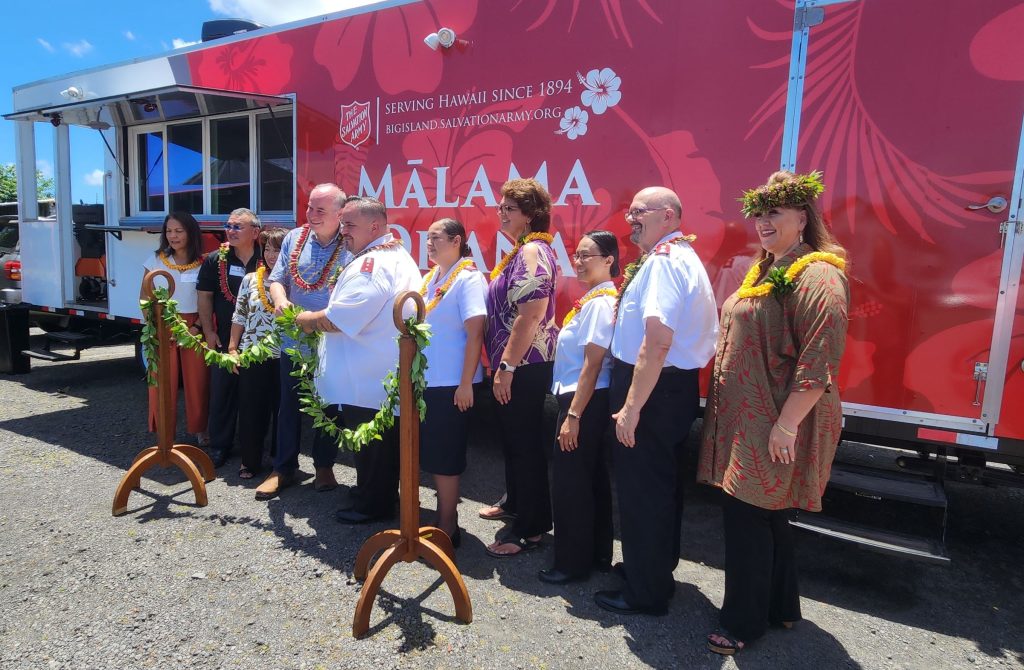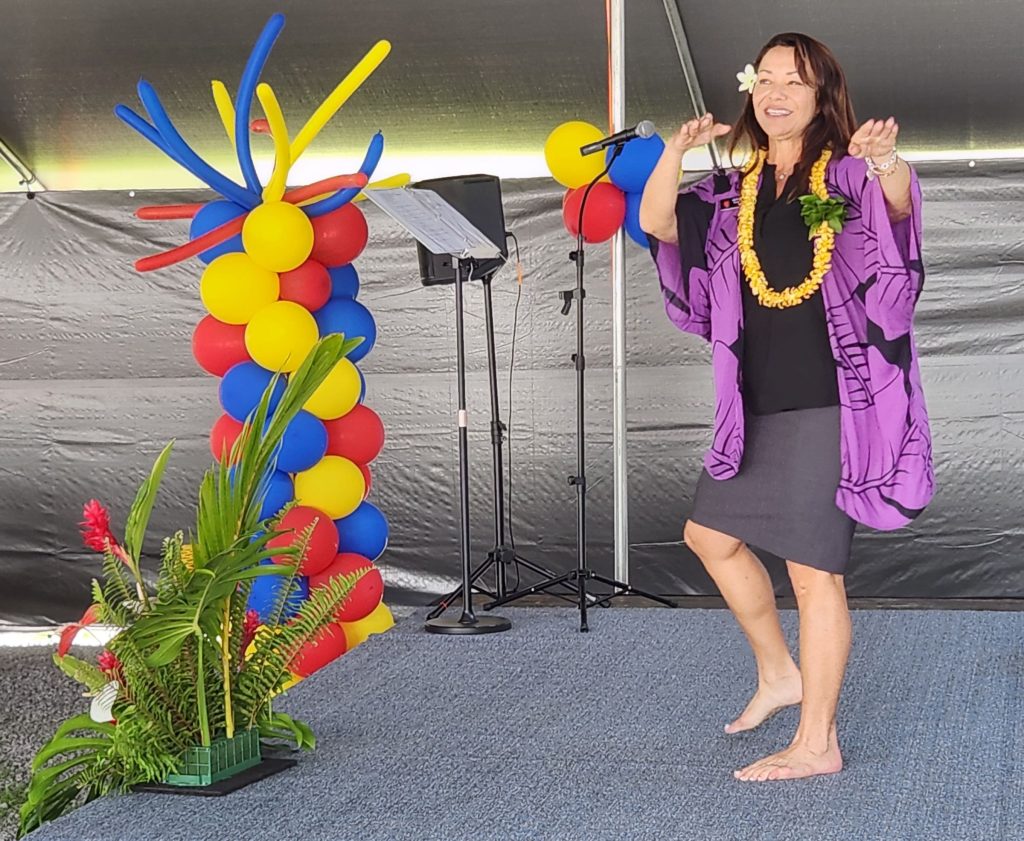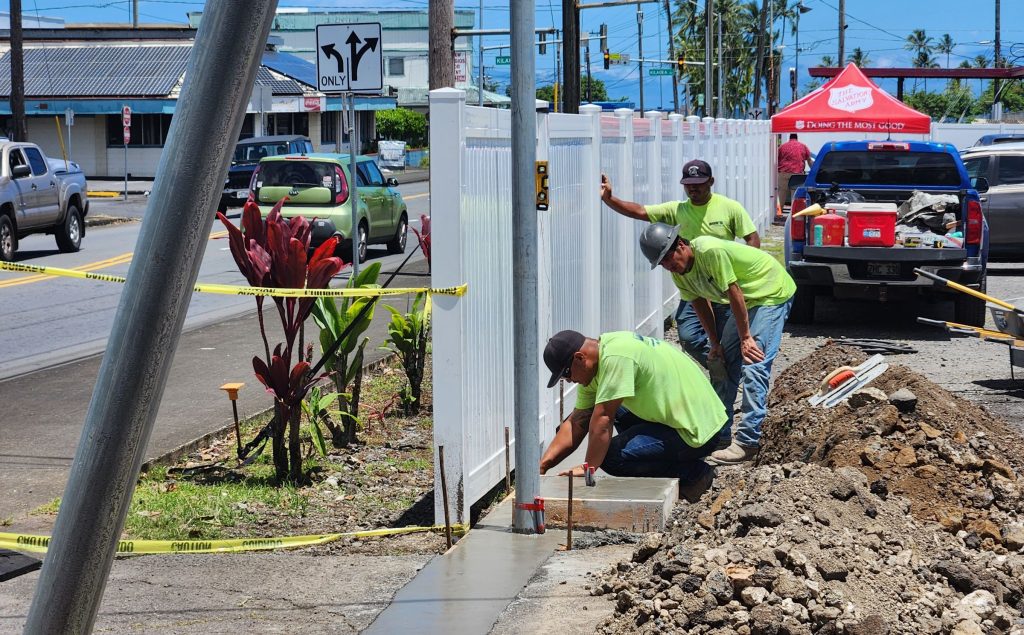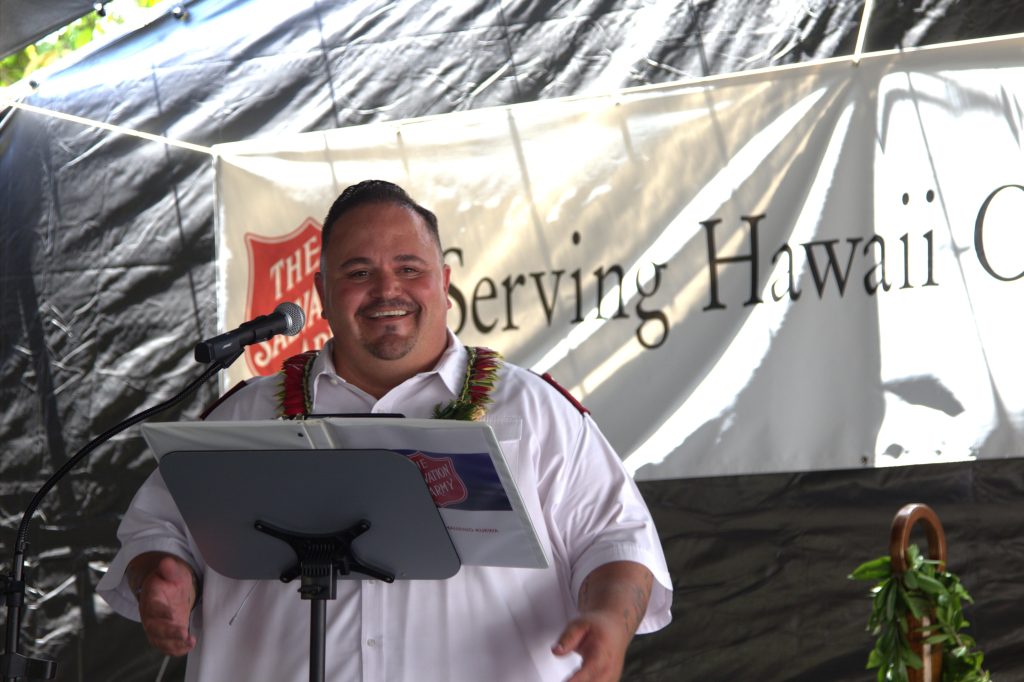Standing together: New overnight safe space, food trailer dedicated at Salvation Army in Hilo

In 1989, while serving as a summer intern at The Salvation Army Hilo Temple Corps, Troy Trimmer was providing meals to the homeless when someone he was trying to help put a knife to his stomach.
“I’ll take your services, but I won’t take your Christ,” the person told him.
“Here, as a young minister of the Gospel, I’m like, ‘What in the world, God? You sent me to Hawai’i to die?'” Trimmer recalled. “By the end of the summer, that young individual still wouldn’t take our Christ. But instead of a knife at my stomach, there was hugs and handshakes, tears and even prayers together.”
The mission of The Salvation Army is the same around the world — to preach the Gospel of Jesus Chris and meet humanity in His name without discrimination, serving all with dignity, honor and respect regardless of their beliefs.
Trimmer, now a major and divisional commander of The Salvation Army Hawaiian & Pacific Islands Division, was at the temple Friday when the Hilo Salvation Army and its community partners hosted a ceremony with prayers, a Hawaiian blessing and special hula performance.
It was the dedication of the new Hilo Overnight Safe Space shelter for homeless people and Mālama ‘Ohana Kitchen mobile food trailer.
The low-barrier safe space, which is fenced off, is adjacent to the Hilo Temple Corps Community Center on Ponahawai Street in downtown Hilo. It opened Friday night, offering care and secure respite on a first-come, first-served basis for those experiencing homelessness .

Every night from 7 p.m. to 7 a.m., there are 25 beds available as well as kennels so homeless people can also shelter with their pets. People can come intoxicated as long as they cause no harm to themselves or anybody else.
“A lot of the people we are expecting are those who are actually living on the doorsteps of our downtown businesses,” said Roxanne Costa, said Hawaiʻi County social services director for The Salvation Army Hilo Temple Corps. “They’ve got a lot more mental health, substance issues and past traumas, so they are not in any space at the moment to deal with their issues.”
A shower trailer compliant with the Americans With Disabilities Act is being built on the mainland and will be added to the space by mid-September.
The overnight shelter also will serve as a hub for support services to deal with a variety of issues, including mental health and substance abuse.
“When we arrived in Hilo, we saw the needs of the unhoused population and saw this large parking lot,” said Capt. Sam LeMar, co-officer of the Hilo Temple Corps and Hawai‘i County coordinator for The Salvation Army Hawaiian & Pacific Islands Division. “We knew we had to do something.”
But this is just the beginning. LeMar said the vision is to expand the shelter to 75 beds and create 10 parking stalls so people who sleep in their cars can have a safe place to park at night.
There also are plans to lay asphalt to improve the area’s drainage, to replace the canopy with a more permanent structure and possibly add a laundry trailer, which LeMar said is big need for the homeless.
The goal is to provide emergency shelter and reserve beds with minimal storage for those who are working and have jobs. LeMar said the Hilo Temple Corps is providing wraparound services, including medical care, in collaboration with the town’s other service providers.
“Our hope is to offer a place where people can find rest, safety and a path to long-term housing and stability,” he said. “We want to reach people before they spend the first night on the street, and for those who have been on the streets for years, we aim to offer a lifeline to a better future.”

The overnight safe space was made possible with funding through a partnership with the state of Hawai‘i and Hawai‘i County.
Hawai‘i County Mayor Mitch Roth said the new safe space is just one piece of a 13-point plan to tackle homeless on the island. The county is working with Gov. Josh Green on funding to implement the plan, which was crafted by The Salvation Army, several other agencies and people experiencing homelessness.
“We’ve been looking at ways that we can help get our homeless a place to have a roof over their heads in the evening,” said Roth.
The county had a 28% decrease in the number of homeless in this year’s Point-In-Time Count, the largest decrease in the state and among the largest dip in the nation. But there still are 720 people around the island who are homeless.
There’s still a long way to go, but the new safe space and county initiatives, including a new short-term shelter on Kuawa Street in Hilo and projects in Kona, are making a difference, Roth said.
Hawai‘i state homeless coordinator John Mizuno said the vision of The Salvation Army to help people with social and life issues aligns with that of the state and county.
The Mālama ‘Ohana Kitchen mobile food trailer, which LeMar affectionately dubbed “The MOK,” is positioned at the safe space and provides nutritious meals to those who sleep at the shelter.
It also acts as a canteen for the Hilo temple and can be mobilized to provide food in emergencies and after natural disasters as well as during community events.
“Whether it’s serving dinner here at the shelter, providing meals during the holidays or supporting community events, the MOK will be at the heart of it all,” LeMar said.
Funds for the the trailer were provided by an anonymous donor.

Upon arriving at the Hilo temple, LeMar couldn’t understand how he had a church that couldn’t cook rice.
Then he was reminded of the incredible work The Salvation Army did in partnership with Hawai‘i County Parks and Recreation during the 2018 Kīlauea eruption and accompanying lava flows in lower Puna, serving more than 68,000 meals to those in need throughout a 5-month period.
Learning that the Big Island experiences more natural disasters than any other part of the state, it became clear that the Hilo temple needed a canteen.
So he and his wife Felicia, his co-captain at the Hilo temple, shared that vision with the anonymous donor who visited and saw the temple serving more than 400 community meals from its cold kitchen and nearly 1,000 meals from its partners and volunteers.
Thus was created the vision and future of the Mālama ‘Ohana Kitchen.
The food trailer is fully self-contained with a generator, propane, hot water heater, refrigeration and freezer space. And it has the capacity to provide up to 2,500 meals a day.
The Salvation Army and its partners hope the new overnight safe space helps put the homeless on a path to long-term, stable housing, but more importantly in a place of knowing — like the partners who came together to make it and the new food trailer happen — they do not stand alone.
“We’re grateful that at the end of this time and as the day goes on that this room will be … transformed with shelters — so that transformation may begin in many of our homeless friends and neighbors who are just looking for that next place of dignity and that next step of hope,” Trimmer said.
Sponsored Content
Comments






